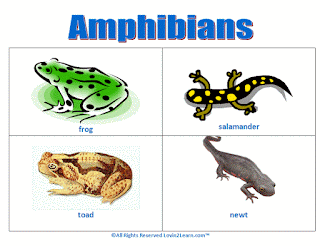Pace work
20/05/2020
form 8
Тема: Амфібії.
20/05/2020
form 8
Тема: Амфібії.
About Amphibians
Amphibians are small vertebrates that need water, or a moist environment, to survive.
The species in this group include frogs, toads, salamanders, and newts. All can breathe and absorb water through their very thin skin.
Amphibians also have special skin glands that produce useful proteins. Some transport water, oxygen, and carbon dioxide either into or out of the animal. Others fight bacteria or fungal infections. And at least one—in each species—is used for defense.
To warn potential predators, the most toxic amphibians are also the most brightly colored. Curare [kyoo-RAW-ree], for example, is found on the skin of colorful poison dart frogs. Another special feature of most amphibians is their egg-larva-adult life cycle. The larvae are aquatic and free-swimming—frogs and toads at this stage are called tadpoles. At a certain size, the young develop limbs and lungs. Some also lose their tails. Eventually, they hop or climb out of the water as adults, and spend the rest of their lives on land. This process is known as metamorphosis.
Like reptiles, amphibians are cold-blooded. Because of their special skin, they require very specific living conditions. Too much sun can damage their cells. Too much wind can dry their skin and dehydrate the animal. As a result, amphibians are the first to die off when their habitats are disturbed or contaminated with chemicals like weed killers. This is the main reason over half of all frog species are in danger of extinction.

Комментариев нет:
Отправить комментарий